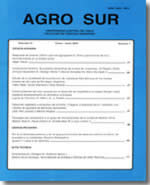Role of plant species diversity and plant functional groups in field condition and grassland stability
Main Article Content
Abstract
A grassland is a community of herbaceous plants in which relationships occur amongst the plant species and between the environment and plant species. These relationships are highly dynamic over time. A plethoria of studies have been conducted to investigate the elements and processes that are involved in the pasture ecosystem. The objectives of this review were to discuss theories and advancements in the study of the plant-environment relationship, and how this relationship could be affected by plant species, in terms of the diversity both between and within species.
The availability of soil resources, including water and light, germination sites and defoliation have been recognised as environmental factors that may limit the presence and phenotypic expression of plant species. The manner in which species diversity maintains ecosystem stability has been described by both the “Diversity-Stability” hypothesis and the “Redundancy” hypothesis. These theories are based on the role of plant species, as individual plant species or plant functional groups, in maintaining ecosystem function. Range condition methodology, also called field condition methodology, represents the state of the ecosystem at a particular moment, expressed as a proportion of the absolute maximum potential. The present review suggests that the principles of this methodology are complementary to the Redundancy hypothesis, with the groups that determine pasture condition in the Range condition methodology corresponding to the principles that group plant species according to their ecosystem function in the Redundancy hypothesis. However, diversity within plants species, both phenotypic plasticity and/or the presence of ecotypes, appears to be an important factor in maintaining spatial and temporal stability in grassland ecosystems when changes occur in environmental constraints and in conditions of environmental heterogeneity.

